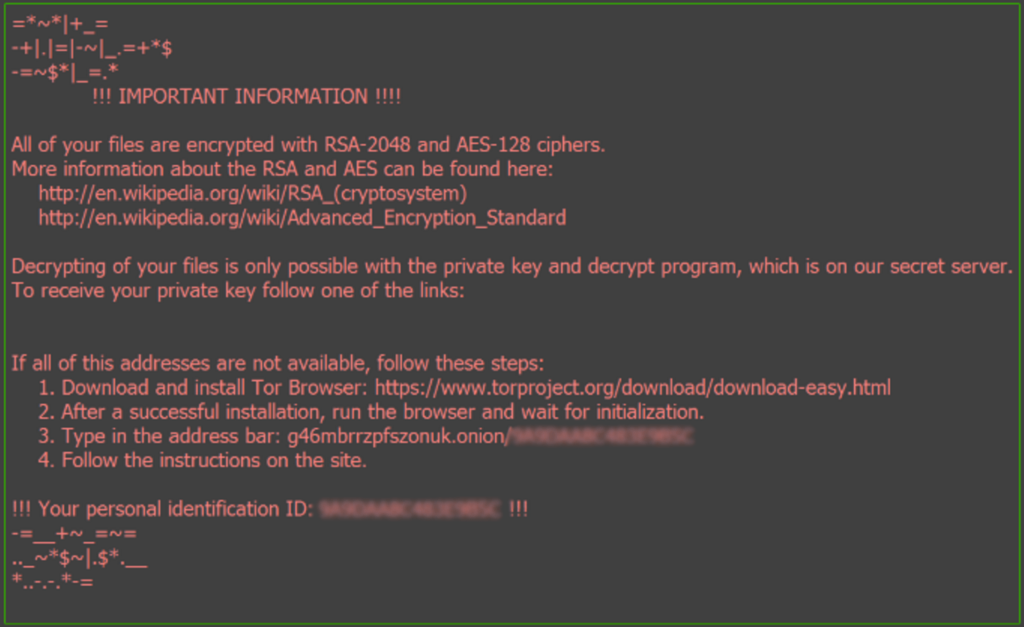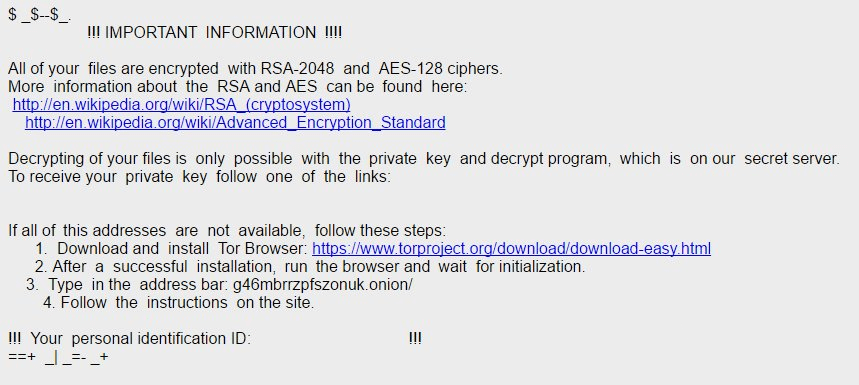The .lukitus file virus is one of the newest active strains of the infamous Locky ransomware virus. The Locky ransomware family continues to evolve as new variants and attack campaigns continue to be launched at various targets.
Manual Removal Guide
Recover .lukitus Files
Skip all steps and download anti-malware tool that will safely scan and clean your PC.
SpyHunter anti-malware tool will diagnose all current threats on the computer. By purchasing the full version, you will be able to remove all malware threats instantly. Additional information about SpyHunter / Help to uninstall SpyHunter
Infection Flow of .Lukitus File Virus
The Locky ransomware family continues to evolve as new variants and attack campaigns continue to be launched at various targets. Learn more about the latest details about the latest infection attacks. The new strain uses the malicious .lukitus extension to label the compromised files.
As the previous .diablo6 and .osiris variants, .lukitus Locky drops ransom messages to instruct victims how to transfer Bitcoins to a given hackers’bitcoin address. The message with the ransom payment instructions appears to be unchanged and is stored in two files yet again – one in a .jpg, the other in a .html. You can preview the picture that is placed as your Desktop background below.

The.lukitus file virus ransom message reads the following:
=*~*I+_=
-+H=I-~I_-=+*$
-=~$*I_=.*
!!! IMPORTANT INFORMATION !!!!
All of your files are encrypted with RSA-2048 and AES-128 ciphers.
More information about the RSA and AES can be found here:
hxxp://en.wildpedia.org/wiki/RSA_(cryptosystem)
hxxp://en.wikipedia.org/wiki/Advanced_Encryption_StandardDecrypting of your files is only possible with the private key and decrypt program, which is on our secret server.
To receive your private key follow one of the links:
If all of this addresses are not available, follow these steps:
1. Download and install Tor Browser: hxxps://www.torproject.org/downIoad/download-easy.html
2. After a successful installation, run the browser and wait for initialization.3. Type in the address bar: g46mbrrzpfszonuk.onion/*******************
4. Follow the instructions on the site.
!!! Your personal identification ID:******************* !!!
-=_+~_=~=
~*$~l.$*._
Below you can see also the .html version of the note:

.Lukitus file virus demands a ransom of 0.5 Bitcoin, which currently equals to nearly 2060 US dollars. However, nobody can guarantee that you will recover your data upon payment so you should NOT under any circumstances pay the ransom to the cybercriminals.
The encryption algorithms used by Locky in its ransom notes is RSA-2048 with AES-128 ciphers. Its latest variant is designed to search for and encrypt all files that have one of the extensions below and afterward adds malicious extension .lukitus to them.
.001, .002, .003, .004, .005, .006, .007, .008, .009, .010, .011, .123, .1cd, .3dm, .3ds, .3fr, .3g2, .3gp, .3pr, .602, .7z, .7zip, .ARC, .CSV, .DOC, .DOT, .MYD, .MYI, .NEF, .PAQ, .PPT, .RTF, .SQLITE3, .SQLITEDB, .XLS, .aac, .ab4, .accdb, .accde, .accdr, .accdt, .ach, .acr, .act, .adb, .adp, .ads, .aes, .agdl, .ai, .aiff, .ait, .al, .aoi, .apj, .apk, .arw, .asc, .asf, .asm, .asp, .aspx, .asset, .asx, .avi, .awg, .back, .backup, .backupdb, .bak, .bank, .bat, .bay, .bdb, .bgt, .bik, .bin, .bkp, .blend, .bmp, .bpw, .brd, .bsa, .cdf, .cdr, .cdr3, .cdr4, .cdr5, .cdr6, .cdrw, .cdx, .ce1, .ce2, .cer, .cfg, .cgm, .cib, .class, .cls, .cmd, .cmt, .config, .contact, .cpi, .cpp, .cr2, .craw, .crt, .crw, .cs, .csh, .csl, .csr, .css, .csv, .d3dbsp, .dac, .das, .dat, .db, .db3, .db_journal, .dbf, .dbx, .dc2, .dch, .dcr, .dcs, .ddd, .ddoc, .ddrw, .dds, .der, .des, .design, .dgc, .dif, .dip, .dit, .djv, .djvu, .dng, .doc, .docb, .docm, .docx, .dot, .dotm, .dotx, .drf, .drw, .dtd, .dwg, .dxb, .dxf, .dxg, .edb, .eml, .eps, .erbsql, .erf, .exf, .fdb, .ffd, .fff, .fh, .fhd, .fla, .flac, .flf, .flv, .flvv, .forge, .fpx, .frm, .fxg, .gif, .gpg, .gray, .grey, .groups, .gry, .gz, .hbk, .hdd, .hpp, .html, .hwp, .ibank, .ibd, .ibz, .idx, .iif, .iiq, .incpas, .indd, .iwi, .jar, .java, .jnt, .jpe, .jpeg, .jpg, .js, .kc2, .kdbx, .kdc, .key, .kpdx, .kwm, .laccdb, .lay, .lay6, .lbf, .ldf, .lit, .litemod, .litesql, .log, .ltx, .lua, .m2ts, .m3u, .m4a, .m4p, .m4u, .m4v, .mapimail, .max, .mbx, .md, .mdb, .mdc, .mdf, .mef, .mfw, .mid, .mkv, .mlb, .mml, .mmw, .mny, .moneywell, .mos, .mov, .mp3, .mp4, .mpeg, .mpg, .mrw, .ms11, .msg, .myd, .n64, .nd, .ndd, .ndf, .nef, .nk2, .nop, .nrw, .ns2, .ns3, .ns4, .nsd, .nsf, .nsg, .nsh, .nvram, .nwb, .nx2, .nxl, .nyf, .oab, .obj, .odb, .odc, .odf, .odg, .odm, .odp, .ods, .odt, .ogg, .oil, .onetoc2, .orf, .ost, .otg, .oth, .otp, .ots, .ott, .p12, .p7b, .p7c, .pab, .pages, .pas, .pat, .pcd, .pct, .pdb, .pdd, .pdf, .pef, .pem, .pfx, .php, .pif, .pl, .plc, .plus_muhd, .png, .pot, .potm, .potx, .ppam, .pps, .ppsm, .ppsx, .ppt, .pptm, .pptx, .prf, .ps, .psafe3, .psd, .pspimage, .pst, .ptx, .pwm, .py, .qba, .qbb, .qbm, .qbr, .qbw, .qbx, .qby, .qcow, .qcow2, .qed, .r3d, .raf, .rar, .rat, .raw, .rb, .rdb, .re4, .rm, .rtf, .rvt, .rw2, .rwl, .rwz, .s3db, .safe, .sas7bdat, .sav, .save, .say, .sch, .sd0, .sda, .sdf, .sh, .sldm, .sldx, .slk, .sql, .sqlite, .sqlite3, .sqlitedb, .sr2, .srf, .srt, .srw, .st4, .st5, .st6, .st7, .st8, .stc, .std, .sti, .stm, .stw, .stx, .svg, .swf, .sxc, .sxd, .sxg, .sxi, .sxm, .sxw, .tar, .tar.bz2, .tbk, .tex, .tga, .tgz, .thm, .tif, .tiff, .tlg, .txt, .uop, .uot, .upk, .vb, .vbox, .vbs, .vdi, .vhd, .vhdx, .vmdk, .vmsd, .vmx, .vmxf, .vob, .wab, .wad, .wallet, .wav, .wb2, .wk1, .wks, .wma, .wmv, .wpd, .wps, .x11, .x3f, .xis, .xla, .xlam, .xlc, .xlk, .xlm, .xlr, .xls, .xlsb, .xlsm, .xlsx, .xlt, .xltm, .xltx, .xlw, .xml, .ycbcra, .yuv, .zip
.Lukitus Locky Ransomware Distribution
The .lukitus Locky ransomware is distributed mainly via spam email campaigns that follow a pattern of sending blank emails with malicious attachments. The Locky infected emails contain malicious .ZIP files. Spreading ransomware through archives is a staple of this type of malware. The ZIP file contains malicious VBS file that once opened triggers the Locky ransomware infection. Other infection sources include browser hijackers, malicious ads and redirects and dangerous software installation packages downloaded from untrusted sites.
Remove .lukitus File Virus and Restore Data
WARNING! Manual removal of .lukitus File Virus requires being familiar with system files and registries. Removing important data accidentally can lead to permanent system damage. If you don’t feel comfortable with manual instructions, download a powerful anti-malware tool that will scan your system for malware and clean it safely for you.
SpyHunter anti-malware tool will diagnose all current threats on the computer. By purchasing the full version, you will be able to remove all malware threats instantly. Additional information about SpyHunter / Help to uninstall SpyHunter
.lukitus File Virus – Manual Removal Steps
Start the PC in Safe Mode with Network
This will isolate all files and objects created by the ransomware so they will be removed efficiently. The steps below are applicable to all Windows versions.
1. Hit the WIN Key + R
2. A Run window will appear. In it, write msconfig and then press Enter
3. A Configuration box shall appear. In it Choose the tab named Boot
4. Mark Safe Boot option and then go to Network under it to tick it too
5. Apply -> OK
Show Hidden Files
Some ransomware threats are designed to hide their malicious files in the Windows so all files stored on the system should be visible.
1. Open My Computer/This PC
2. Windows 7
-
– Click on Organize button
– Select Folder and search options
– Select the View tab
– Go under Hidden files and folders and mark Show hidden files and folders option
3. Windows 8/ 10
-
– Open View tab
– Mark Hidden items option

4. Click Apply and then OK button
Enter Windows Task Manager and Stop Malicious Processes
1. Hit the following key combination: CTRL+SHIFT+ESC
2. Get over to Processes
3. When you find suspicious process right click on it and select Open File Location
4. Go back to Task Manager and end the malicious process. Right click on it again and choose End Process
5. Next, you should go folder where the malicious file is located and delete it
Repair Windows Registry
1. Again type simultaneously the WIN Key + R key combination
2. In the box, write regedit and hit Enter
3. Type the CTRL+ F and then write the malicious name in the search type field to locate the malicious executable
4. In case you have discovered registry keys and values related to the name, you should delete them, but be careful not to delete legitimate keys
Click for more information about Windows Registry and further repair help
Recover .lukitus Files
WARNING! All files and objects associated with .lukitus File Virus should be removed from the infected PC before any data recovery attempts. Otherwise the virus may encrypt restored files. Furthermore, a backup of all encrypted files stored on external media is highly recommendable.
DOWNLOAD .lukitus File Virus Removal ToolSpyHunter anti-malware tool will diagnose all current threats on the computer. By purchasing the full version, you will be able to remove all malware threats instantly. Additional information about SpyHunter / Help to uninstall SpyHunter
1. Use present backups
2. Use professional data recovery software
Stellar Phoenix Data Recovery – a specialist tool that can restore partitions, data, documents, photos, and 300 more file types lost during various types of incidents and corruption.
3. Using System Restore Point
-
– Hit WIN Key
– Select “Open System Restore” and follow the steps

4. Restore your personal files using File History
-
– Hit WIN Key
– Type restore your files in the search box
– Select Restore your files with File History
– Choose a folder or type the name of the file in the search bar
– Hit the “Restore” button



